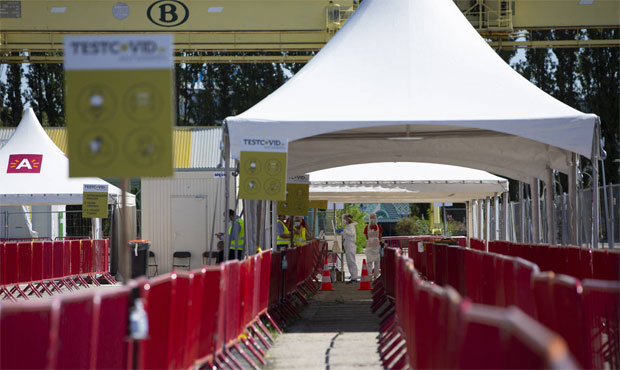
A drive-thru COVID test site. (AP Photo / Virginia Mayo, Archives)
Executive Dow Constantine announced Friday that King County will establish high-volume community vaccination sites.
See the phases of the Washington COVID-19 vaccine
The hope is that the sites will be similar to the existing high-volume test sites that the county already employs and ensure “that we can start working as medical personnel receive their doses”.
The county will try to eliminate some of the bureaucracy that would normally pose barriers to a plan like this and will instead pay for vaccine distribution locations directly from its own budget.
“We are not waiting for all the usual negotiations and contracts, but we do expect to be reimbursed by the state and federal governments if we want to continue our robust public health response,” said Constantine.
Initially, the focus will be on setting up locations in South King County, where COVID-19 cases are currently the highest in the region, while residents faced “distressing health disparities”.
In the current schedule, Seattle-King County Public Health expects the first sites to be up and running on February 1.
This came in the wake of Washington state health officials, releasing information about the next phase of vaccine prioritization.
Governor Inslee unveils ‘Healthy Washington’, a regional reopening plan
The first phase that began in December includes high-risk health workers in healthcare settings, first high-risk respondents, residents of long-term care facilities and recently expanded to all other workers in healthcare settings.
Michele Roberts, acting assistant secretary for the Washington State Department of Health, specified that Phase 1B will have several layers, the first of which includes all people aged 70 and over, and people aged 50 and over in multigenerational families. Level B2 includes critical high-risk workers aged 50 or over who work in certain congregated environments: agriculture; food processing; grocery stores; Elementary and high school teachers and school staff; child care; corrections; prison, jail or detention centers; public transportation; fire; law enforcement.
